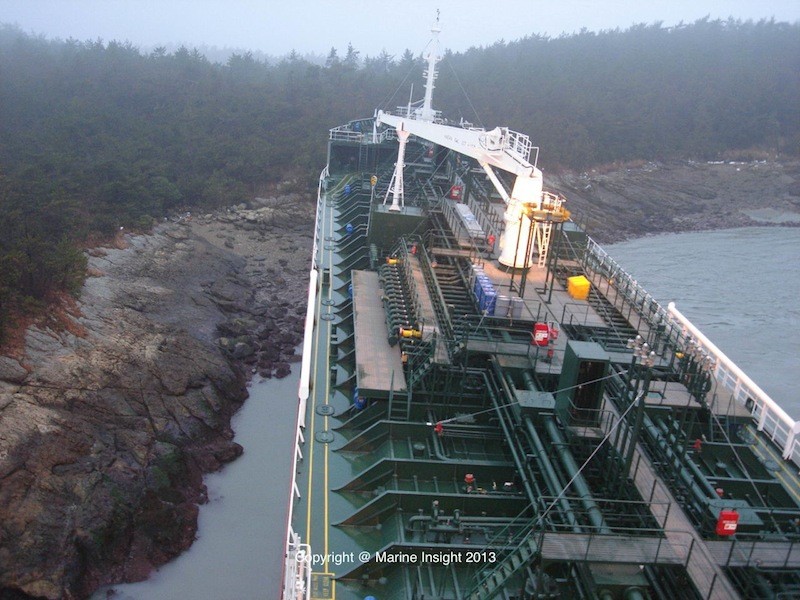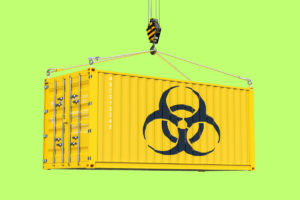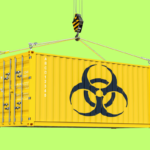Guidelines On Place of Refuge for Ships in Distress
The loss of ships such as the ‘Erika’, ‘Prestige’ and ‘Castor’ in the past has been accountable enough for IMO to take up the issue of ‘Port of Refuge’ and formulate newer and stricter guidelines and recommendations for ships in need of assistance. The guidelines adopted by the IMO A.949 (23) for “Places of Refuge” instead of “Port of Refuge”, made way for better control of Maritime Safety and Pollution Prevention. SAR Convention would continue to be followed where safety of life is involved.
On the basis of the assistance needed by ships and subsequent introduction to the place of refuge, IMO adopted another resolution, A. 950 (23) for Maritime Assistance Services or MAS. This guideline recommended all coastal states to establish a single point of contact (SPOC) for receiving reports and monitoring a ship’s situation in order to stabilize the vessel and guide it towards a safer place.
Why Place of Refuge?
Port of Refuge has always been to the benefit of ships in need of assistance but not in distress, the coastal states, and the cargo owners. The desirability and advantages of a Port of Refuge were more so as the property and environmental damages were limited.
Place of Refuge widens the scope of refugee waters in a coastal state. By law, it means a place of shelter on a coast or a port whereby the ship in need of assistance can take actions such that the condition of the vessel is stabilized and further loss to property or the environment is restricted.
Ships in Need of Assistance means a ship which is in a situation apart from requiring rescue of personnel, which could give rise to loss of property (ship) and pose an environmental or a navigational hazard.
As far as the Contract of Carriage or Hull and Machinery policies are concerned, ‘deviation’ to a Place of Refuge can be justified if proved within the terms of the contracts.
Some of the valid examples for deviating to a Place of Refuge are –
– Heavy Weather Damage
– Collision Damage
– Shift of Cargo during the voyage
– Machinery Breakdown
– Any other accident causing serious threat to the vessel and cargo
– Breakdown/Fault in equipment and systems affecting cargo operations
Guidelines for actions required by Masters –
1. Masters should weigh up the situation and necessitate risk assessments for safeguarding human life, property and the marine environment. Maintaining seaworthiness is of prime importance.
2. The Master should take in consideration the following factors before finally deciding upon for a place of refuge –
- Human life at stake
- Nature and condition of damage
- Condition of cargo onboard
- Environmental threat / Risk of Pollution
- Availability of Salvors
- Distance and estimated transit period to the place of refuge
- Insurance against such incidents
3. The ‘decision-making process’ should be in conjunction with the coastal states’ Maritime Assistance Service or MAS and the shipping company’s Designated Person. Master should comply with the necessary obligations and requirements of the coastal state’s maritime assistance and also seek to protect the vessel and cargo owners’ interests.
4. Once it has been decided of the place for refuge, it is the Master’s principal endeavor to take the damaged vessel safely towards the shore. The Master in due course shall continuously communicate with the MAS authorities as well as the Company’s DP and Superintendents.
5. The Master will ensure that accurate information regarding the state of the vessel such as the severity of damage, condition of the hull and machinery, etc. has been disseminated to the coastal authorities, who would then prepare for the vessel’s arrival.
6. Other Information regarding –
– Salvage services, if used.
– Towage / Pilotage required
– Repair infrastructure and Workshop services, as required
– Cargo handling equipment/services
– Local Agents
– Local P&I Club representatives
– Insurance Company’s details
– Details of the vessel’s owners and Flag State must be provided to the coastal / port authorities for safe and pollution free damage control.
On arrival at Place of Refuge
- The Master, on the vessel’s arrival, is responsible for making a Note of Protest within 24 hours and reserving the right to extend the protest.
- Master to ensure that the vessel’s owners declare General Average accordingly. General Average Bond and Guarantee Forms are to be signed for exercising ‘Lien’ on cargo.
- Co-ordinating with the P&I representatives, the Master shall prepare all his statements based on the facts and avoid such ambiguities that may affect the owners
- The Master shall co-operate with the Hull and Machinery surveyors, Class surveyors, Cargo inspectors, Port State Control officers, etc. attending the vessel for completing the obligatory inspections and paperwork.
Reasons for Refusal to Port of Refuge
– Refusal to take responsibility for grief – stricken ships by coastal states’ High officials or Politicians.
– Many ports are not equipped for repair or able to cope up with such situations.
– Payments involving Insurance, Compensations, Cost of clean-up, etc. are also of greater concern.
– Environmental damage and Social impact caused due to the damaged vessel.
Subsequently, certain incidents in the past that led to devastating results were due to such ambiguities between the Right of the Coastal State and Rights of a ship in danger. The sovereignty and the rights of coastal state to take action for protecting its coastline against pollution are incorporated in international treaties such as of the UNCLOS, Salvage Convention and FAL Convention. Interestingly, certain provisions under UNCLOS allow for a vessel in Distress to stop and anchor while navigating the territorial sea and the archipelagic waters.
The European Sea Ports Organization (ESPO) and the IMO claim that a ‘Port’ is not necessarily the best bet for a damaged ship. More-so, the ship needs a sheltered place where essential operations can be carried out and therefore, a ‘Place of Refuge’ is more appropriate than the concept of ‘Port of Refuge’.
Do you have info to share with us ? Suggest a correction

About Author
Bikram Pal Singh is a professional mariner and blogger. He has sailed extensively, serving on various Oil tankers and Offshore Vessels. He enjoys reading and compiling notes about critical shipboard operations and crew psychology.
Latest Maritime law Articles You Would Like:
Latest News
- What are Logistics Risks?
- How Port and Terminal Operators Can Control Emissions?
- Minimum Quantity Commitment (MQC) and Liquidated Damages in Container Shipping: Concept and Relevance
- MARPOL (The International Convention for Prevention of Marine Pollution For Ships): The Ultimate Guide
- The Ultimate Shipping Container Dimensions Guide
- A Comprehensive Overview of IMDG Code for Shipping Dangerous Goods
Subscribe To Our Newsletters
By subscribing, you agree to our Privacy Policy and may receive occasional deal communications; you can unsubscribe anytime.
Web Stories






















thank a lot
Thanks hw do i get more article dat i use in my project writing as a student
thank you sir
No mention of the availability of Fire and Rescue Maritime Response in EU waters, offering initial remote tactical advice in emergency situations. There is also the possibility of experience trained maritime tactical advisers flying out to the vessel in certain situations. Not only can this assist the Master in decision making and assessment of the risk, but fills a capability gap between initial on board response by crews and that of Salvage operators some 24-48 hrs after the initial call.
Its a tedious task though, owesome article , thanks to the latest Guidelines -very useful.